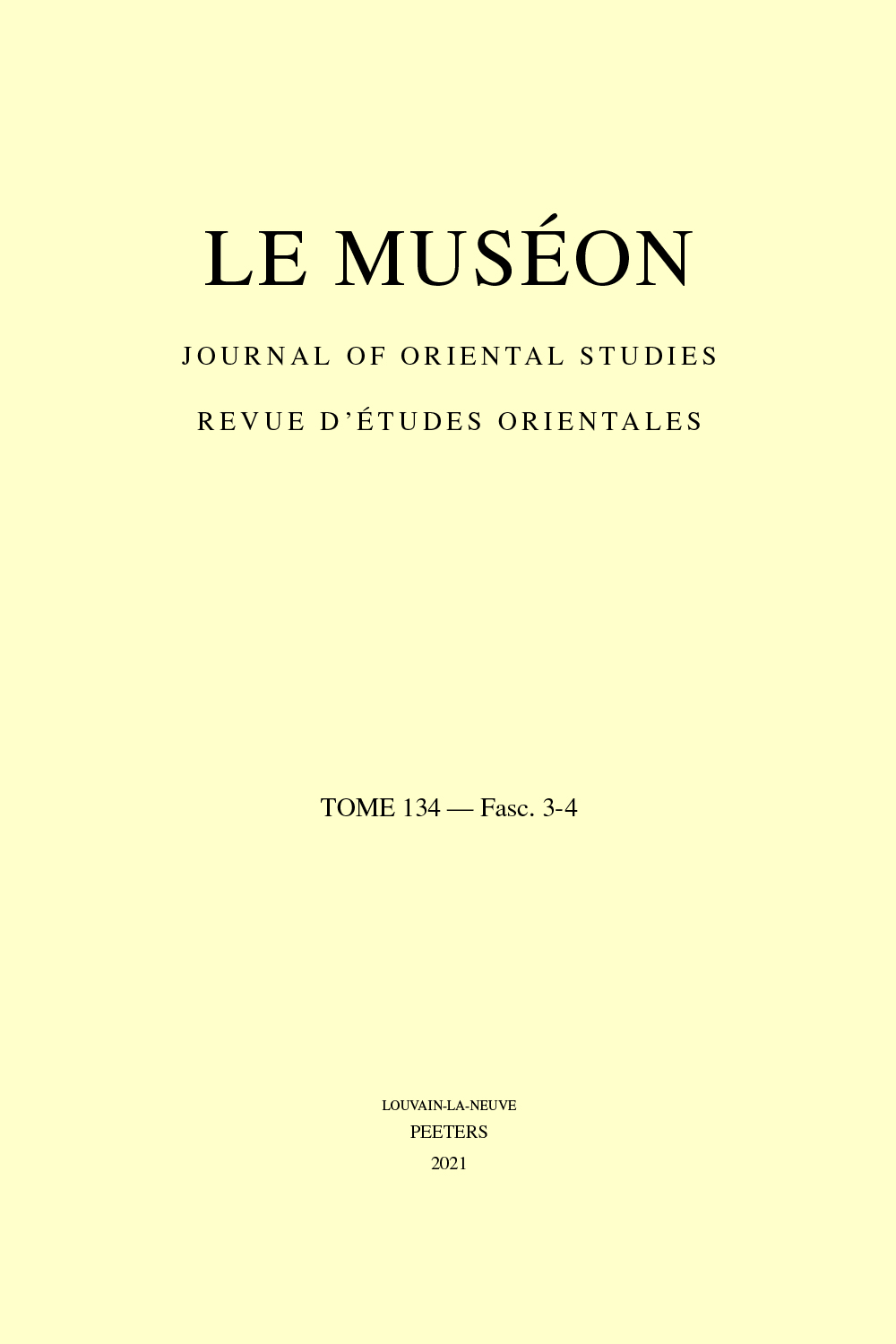 previous article in this issue previous article in this issue | next article in this issue  |

Preview first page |
Document Details : Title: Bāb al-Tawfīq Subtitle: Une porte du Caire fatimide oubliée par l'histoire Author(s): PRADINES, Stéphane , DEN HEIJER, Johannes Journal: Le Muséon Volume: 121 Issue: 1-2 Date: 2008 Pages: 125-152 DOI: 10.2143/MUS.121.1.2120504 Abstract : Within the framework of an archeological and historic research project on the Eastern city walls of Fatimid and Ayyubid Cairo, carried out by the Institut français d’Archéologie orientale (IFAO), a relatively minor gate is highlighted here: Bāb al-Tawfīq “the Gate of Success" (or: “of Divine Assistance”). Like its more famous counterparts in the North and South walls, Bāb al-Futūḥ, Bāb al-Naṣr, and Bāb Zuwayla, it was erected by the notorious Armenian vizir Badr al-Ğamālī, who held effective power from 1074 till 1092. The article links a fresh publication and annotated translation of the foundation inscription to archeological and architectural considerations. It elaborates the thorny question of whether the name Bāb al-Tawfīq, as found in the inscription, and the more frequently used name Bāb al-Barqiyya actually refer to the gate studied here, and challenges recent research dismissing such an identification. Regarding the gate’s archeological context, the project’s recent excavations have also unearthed sections of Badr al-Ğamālī’s wall. These material data are linked to translations of relevant passages written by the famous 14th-15th century historian, al-Maqrīzī, and corroborates his observation that this wall was built in mudbrick. Due attention is paid to to the much debated question of whether the architects of the city walls were Armenians, and to the incorporation of ancient Egyptian granite blocks in the wall, which were shown to be of Heliopolitan provenance. In a wider context, the article further substantiates earlier research underscoring the tremendous historical impact of Badr al-Ğamālī’s rule in Fatimid Egypt, both in its military and in its urbanistic and administrative aspects. |
|


